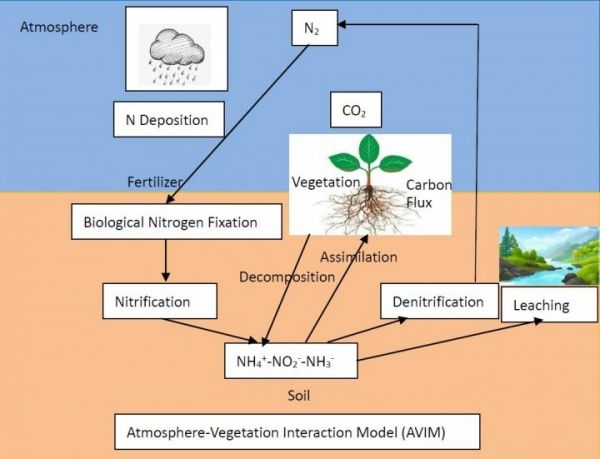Along with Europe and North America, East Asia has in the past few decades become one of the three largest nitrogen deposition centers in the world. This can lead to considerable impacts on the structure and function of ecosystems; for instance, excessive nitrogen is thought to be one of the drivers of biodiversity change across the globe; and nitrogen deposition can also cause acidification of soils and water. Consequently, it is important to study the carbon–nitrogen cycle in East Asia.
Professor Li Dan from the Institute of Atmospheric Physics, Chinese Academy of Sciences, and his colleagues, incorporated the full nitrogen cycle—including deposition, mineralization, immobilization, biological fixation, nitrification, denitrification, volatilization, and leaching of nitrogen—into a land surface model (AVIM: Atmosphere–Vegetation Interaction Model), which was designed and developed by Chinese scientists and was one of the earliest models to consider the dynamical process of vegetation. The latest version of AVIM has been run for the China region for the period 1979 to 2015 at a resolution of 10 km, and the results have been recently published in Atmospheric and Oceanic Science Letters.
Read more at Institute of Atmospheric Physics, Chinese Academy of Sciences
Image: The nitrogen cycle related to carbon flux in the Atmosphere--Vegetation Interaction Model (Credit: Li Dan)


